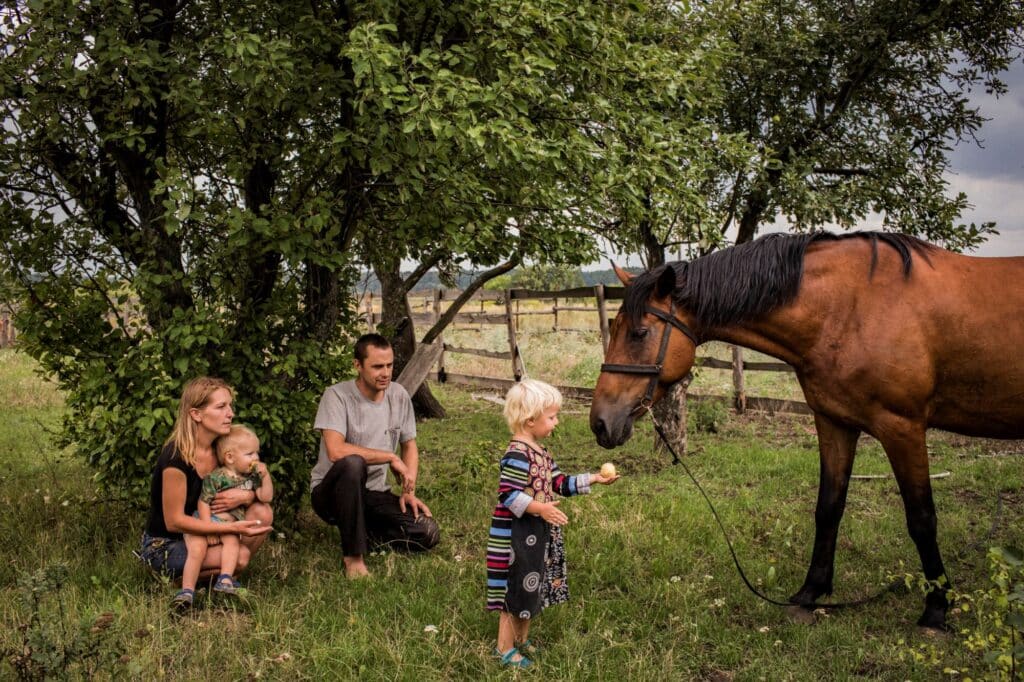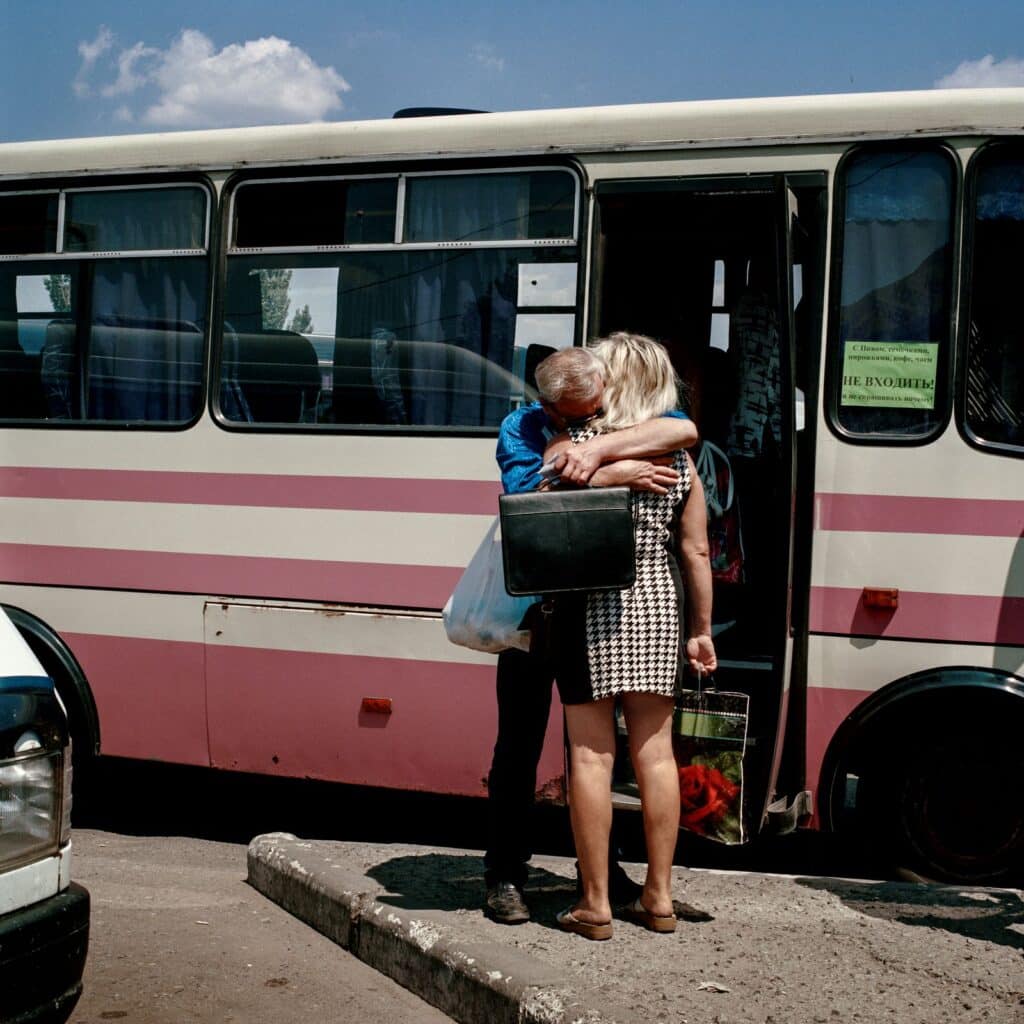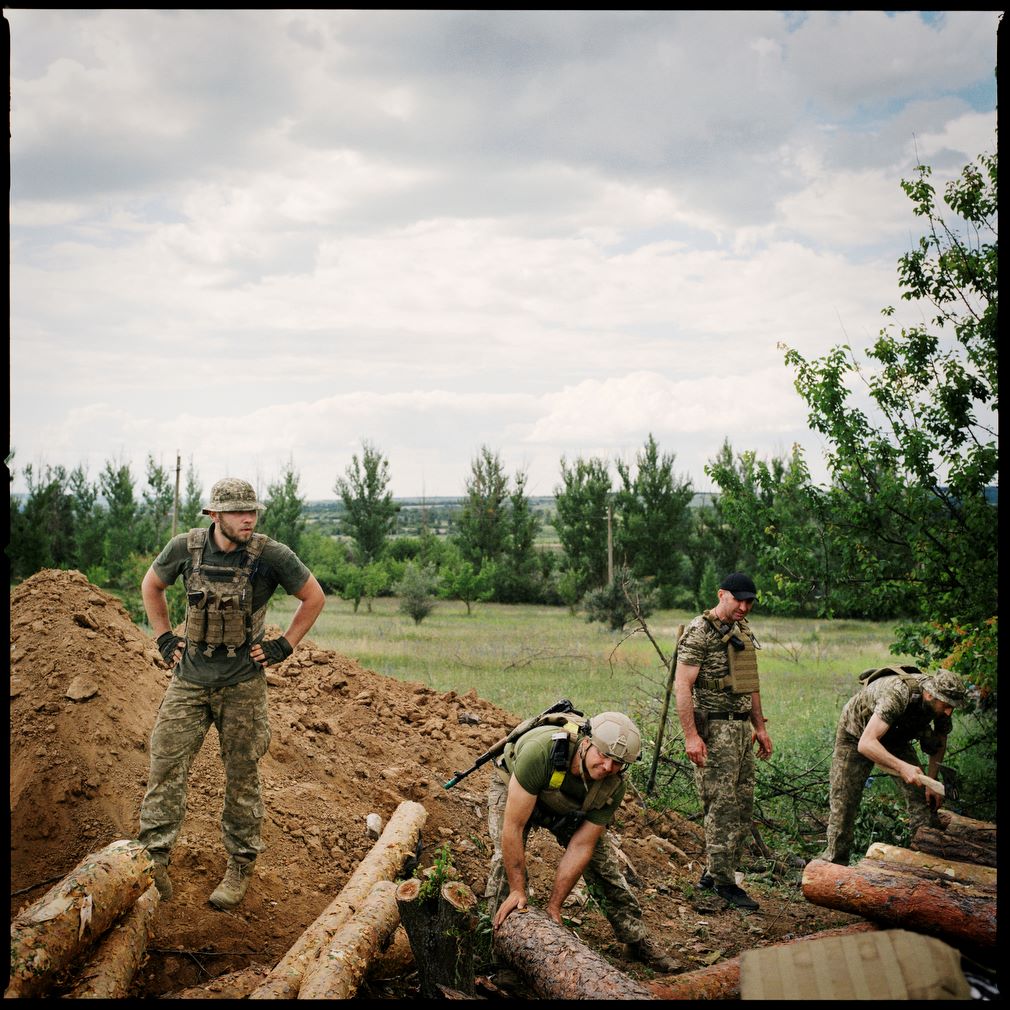An independent journalist, a contributor to major magazines such as National Geographic and The New Yorker, Anastasia Taylor-Lind has chosen slowjournalism. With the Ukrainian journalist and researcher Alisa Sopova, she has been trying since 2014 to follow the Ukrainian civilian populations, to tell the story through their eyes, far from the “breaking news” that she tries to flee.
These portraits and testimonies of great dignity exhibited at the Verdun Memorial, in France, tell the story in all its nuances through images and words. Anastasia Taylor-Lind takes her photographs using a medium format Hasselblad film camera. The device is exhibited in Verdun and accompanied her in Ukraine from 2014 to 2023. On June 27, 2023, its mechanism was blown up by the explosion of a Russian missile that fell on a restaurant in the town of Kramatorsk. The bombing left 13 dead and 61 injured, including herself.
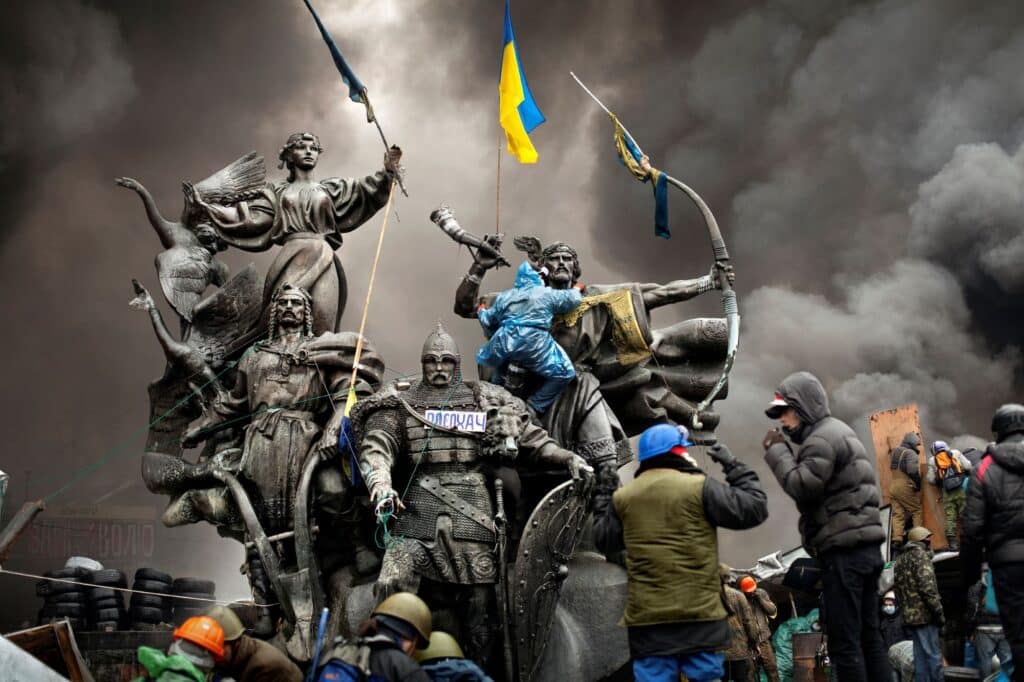
What do you feel when seeing your exhibition in this place, which commemorates the historical tragedy of World War I ?
Alisa Sopova and I had a very big emotional reaction to it. We’re walking through a destroyed village, and I know that there are villages all over Ukraine that are destroyed like this. It’s like we’re in this historic place, looking at violence and warfare that’s part of my childhood imagination, probably for all Europeans. But being here in this context, showing the pictures from Ukraine, is quite moving. When you look at a photograph in a newspaper or in a magazine, you can be in your house, you can be on the Metro or you’re scrolling your phone. But here, the experience of seeing the Memorial Museum going out on the battlefield, where we know 300 000 people were killed in 300 days, and knowing that all around us is essentially a graveyard and to see the destroyed village next door and then afterwards to walk into this space and look at these pictures, in terms of storytelling, it’s quite a different experience.
“I just felt like I was being an asshole to people. Show up, ask some questions, take some pictures, and then just leave really quickly”
You have chosen slow-journalism. Could you explain the reasons for this choice?
First of all, I’m a freelance photojournalist, so I’m free to report in a way that feels right to me. We don’t have to know what story is before we find our story. Alisa Sopova and I both have experience of working in news teams, moving with a large group of people with a security adviser, a translator, a driver, a journalist, a photographer, sometimes a video crew, having to move very quickly, often for safety reasons. That way of working just made me feel bad.
Was it frustration?
I just felt like I was being an asshole to people. Show up, ask some questions, take some pictures, and then just leave really quickly. I felt like I wasn’t moving through the world in a way that felt right with me. Of course, I don’t always have time to speak to everybody and to revisit them many times. It’s not always the case. But when I am free to work as I wish, I hope I will always be able to think in terms of years and decades rather than in terms of days and weeks and maybe months. But now the situation has changed a lot in Ukraine. We have to work a little bit quicker sometimes. Now it’s not possible to revisit so many of the towns that we photographed in. I still have hope that it will be possible one day.
“If you’ve spent several days working in their garden with them and don’t ask any questions, and just listen to the stories you tell, the understanding is completely different”
You said that we had to be careful of the “clichés” of war reporting. How can we avoid them?
Alisa is from the community that we’re reporting on. And she worked as a local journalist for the Donbas newspaper for years. She was the one who said, we need to make sure that the people in the photographs recognize themselves in the photographs. More photographs aren’t always recognizable to the people in them. People don’t always look like themselves. Does that make sense? So we weren’t only thinking about what the pictures looked like to people outside, but also what the pictures looked like to people inside.
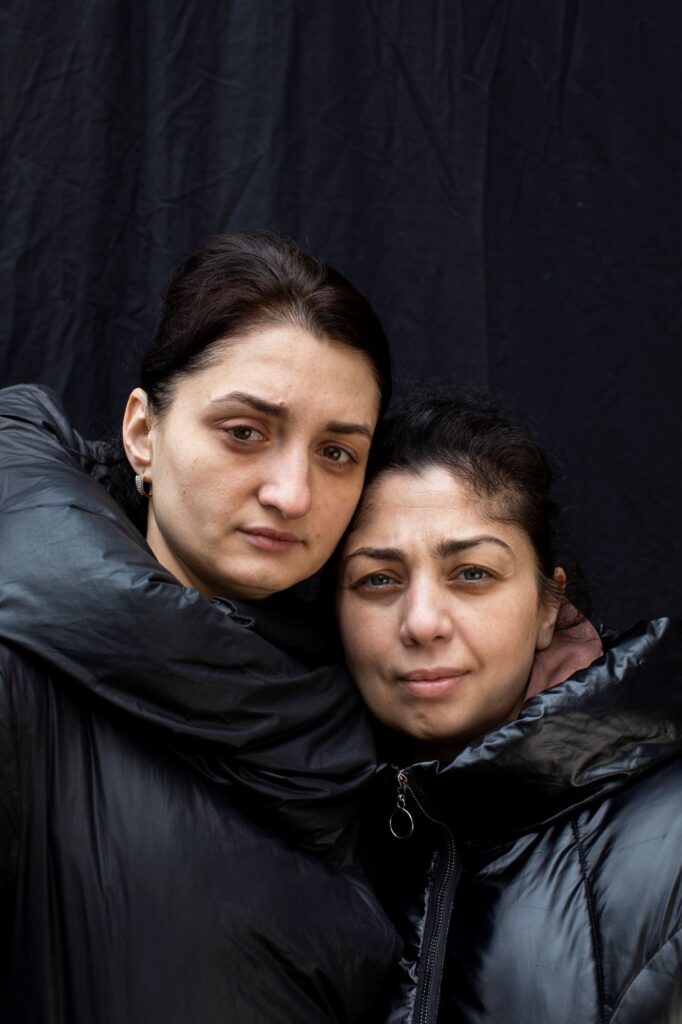
Why did you choose to use a Hasselblad?
I like to make things hard ! But I like this way of working in it, and it’s not just because it’s slow. You have to go up to someone with a light meter, then you have to put the focusing loop up, focus it, then you put it back down. It takes time. But beyond that, you can’t see the picture straight away. So I don’t see the picture for six weeks, eight weeks. And all of that just helps the creative and editorial process to slow it down.
For great journalism and testimony, is having not enough time the most threatening thing ?
What Alisa is bringing with her, now that she’s an anthropologist, not only a writer, is this what’s known as participatory observation. If you ask someone a question, do you support Ukraine? They’ll give you an answer. But if you’ve spent several days working in their garden with them and don’t ask any questions, and just listen to the stories you tell, the understanding is completely different.
“Ukraine: Photographs from the Front” is exhibited at the Verdun Memorial (France), until November 30, 2024.
“5k From the Frontline”: Exhibition presented at the Visa pour l’image festival in Perpignan from August 31 to September 15, 2024.
